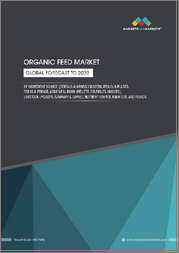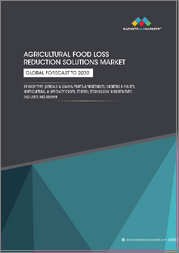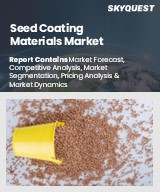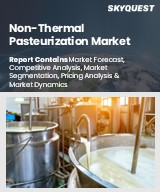
|
시장보고서
상품코드
1636782
유정 시추용 고펄스 파워 시장 예측(-2030년) : 구성요소별, 유정 유형별, 파워 레인지별, 용도별, 지역별 세계 분석High Pulsed Power Marketin Well Intervention Market Forecasts to 2030 - Global Analysis By Component (Pulse Generators, Capacitors, Power Supplies and Other Components), Well Type, Power Range, Application and By Geography |
||||||
Stratistics MRC에 따르면, 전 세계 유정 시추용 고펄스 파워 시장은 2024년에 3억 3,390만 달러로 예측 기간 동안 25.2%의 CAGR로 성장하여 2030년에는 12억 8,603만 달러에 달할 것으로 예상됩니다.
유정 시추에서 고출력 펄스 파워(HPP) 시장은 석유 및 가스 유정의 성능을 향상시키기 위해 고도의 고에너지 펄스 파워 기술을 사용하는 것을 의미하며, HPP 시스템은 유정 자극, 시추, 세정 등의 용도로 급속한 고강도 에너지 펄스를 생성 및 공급합니다. 이러한 기술은 작업 효율 향상, 탄화수소 회수율 향상, 환경 영향 감소를 목적으로 유정 시추에 많이 사용되고 있습니다.
에너지 수요의 증가
석유 및 가스 회사들은 노후화된 유정에서 생산량을 늘리기 위해 첨단 기술을 찾고 있습니다. 고출력 펄스 파워 시스템은 정확하고 효과적인 유정 자극을 가능하게 하여 가동 중단 시간을 줄이면서 회수율을 높일 수 있습니다. 또한, 이러한 시스템은 비용 효율적인 개입을 지원하며, 도전적인 저류층에서 생산량을 극대화하는 데 있어 매력적입니다. 또한, 재생에너지에 대한 관심의 증가는 탄화수소에 대한 지속적인 의존과 함께 혁신적인 유정 개입 솔루션의 필요성을 더욱 높이고 있으며, HPP 시스템은 높은 신뢰성과 다양한 유정 조건에 대한 적응성을 제공함으로써 이러한 수요에 부응하고 있습니다. 그 결과, 에너지 수요의 증가는 유정 시추 시장에서 HPP 기술의 채택을 직접적으로 촉진하고 있습니다.
규제 및 안전에 대한 우려
정부의 엄격한 규제는 첨단 고펄스 전력 기술의 보급을 지연시키고, 기업의 컴플라이언스 비용을 증가시키는 경우가 많습니다. 안전 표준은 광범위한 테스트 및 인증 프로세스를 필요로 하며, 이는 기술 혁신과 상용화를 지연시킬 수 있습니다. 장비 고장 및 환경 파괴와 같은 고에너지 운전과 관련된 잠재적 위험은 더욱 엄격한 모니터링이 필요합니다. 또한, 전 세계적으로 통일된 규제가 없기 때문에 모순이 발생하여 국경을 초월한 업무가 복잡해집니다. 이러한 문제들은 운영의 복잡성을 증가시키고 신규 진입을 방해하여 전체적으로 시장 성장을 제한하고 있습니다.
재생에너지에 대한 수요 증가
에너지 부문이 지속가능성을 향해 나아가고 있는 가운데, 지열 및 해상 풍력과 같은 재생에너지원은 효율적인 유정 개입 기술을 필요로 하며, HPP 시스템은 정확하고 비침습적인 에너지 공급을 가능하게 하고, 개입 시 환경에 미치는 영향을 최소화합니다. 이 기술은 유정 회수, 유지보수 및 자극 강화를 지원하여 친환경 에너지 목표에 부합하는 기술입니다. 또한, HPP의 고온 및 고압 조건에 대한 적응성은 재생에너지 유정의 복잡한 요구 사항에 적합합니다. 그 결과, 청정에너지 솔루션에 대한 관심이 높아짐에 따라 유정 내 응용 분야에서 HPP의 채택이 가속화되고 있습니다.
대안과의 경쟁
첨단 코일 튜빙 및 수압파쇄와 같은 신기술은 HPP 시스템에 대한 의존도를 낮추면서 비용 효율적이고 효율적인 솔루션을 제공합니다. 이러한 대안은 운영 유연성이 높고 도입이 쉬운 경우가 많기 때문에 다양한 고객에게 어필할 수 있습니다. 또한, 재생에너지와 친환경 기술에 대한 관심이 증가함에 따라 전통적인 석유 및 가스 탐사로부터 관심이 이동하면서 HPP 애플리케이션에 대한 수요가 제한되고 있으며, HPP 시장의 기업들은 혁신적인 솔루션이 넘쳐나는 가운데 차별화를 꾀해야 하는 어려움에 직면해 있습니다. 결과적으로 시장의 성장과 수익성은 이러한 경쟁 압력으로 인해 제약을 받게 될 것입니다.
COVID-19의 영향
COVID-19 사태는 유정 시추 분야의 고펄스 파워 시장에 큰 영향을 미쳤습니다. 봉쇄와 여행 제한은 전 세계 석유 및 가스 운영에 혼란을 가져왔고, 프로젝트 지연과 시추 서비스 수요 감소로 이어졌습니다. 에너지 소비 감소와 유가 변동으로 인해 고펄스 파워 시스템과 같은 첨단 기술에 대한 투자가 더욱 억제되었습니다. 그러나 업계가 비용 효율적인 솔루션과 원격 조작으로 전환함에 따라 혁신적인 고펄스 파워 기술에 대한 수요는 회복될 것으로 예상됩니다. 석유 및 가스 부문의 점진적인 회복은 효율성과 지속가능성에 대한 관심 증가와 함께 팬데믹 이후 성장 기회를 제공할 것입니다.
예측 기간 동안 커패시터 부문이 가장 큰 비중을 차지할 것으로 예상됩니다.
커패시터 부문은 효율적인 유정 자극 및 개입 프로세스에 필수적인 고에너지 펄스로 인해 예측 기간 동안 가장 큰 시장 점유율을 차지할 것으로 예상됩니다. 가혹한 조건을 견디고 안정적인 에너지 출력을 제공하는 능력은 고출력 공구의 신뢰성을 높입니다. 이 기술은 고에너지 방전을 정밀하게 제어할 수 있어 작업 효율을 개선하고 가동 중지 시간을 줄여 생산성을 향상시킵니다. 또한, 커패시터 소재와 설계의 발전으로 더 작고 내구성이 뛰어난 커패시터 유닛이 개발되어 소형 유정용 장비에 적합하게 되었습니다. 그 결과, 커패시터 부문은 이 성장 시장에서 혁신적이고 고성능의 솔루션을 실현하는 주요 요인이 되고 있습니다.
예측 기간 동안 가장 높은 CAGR을 기록할 것으로 예상되는 우물 청소 부문
유정 세정 분야는 작업 효율성과 비용 효율성 향상으로 인해 예측 기간 동안 가장 높은 CAGR을 기록할 것으로 예상됩니다. 고출력 펄스 파워 툴은 이물질, 스케일, 장애물을 제거하고 유정 생산성을 최적화하는 데 필수적입니다. 이러한 도구는 정확한 고에너지 펄스를 공급하여 기존 방식에 비해 다운타임을 줄여줍니다. 석유 및 가스 산업이 노후화된 유정에서 채굴량을 극대화하는 데 점점 더 중점을 두면서 고급 유정 세정 기술에 대한 수요가 증가하고 있습니다. 또한, 고압 및 고온 우물을 포함한 가혹한 환경에서 작동할 수 있는 능력은 필수 불가결한 요소가 되고 있습니다. 따라서, 높은 펄스 파워 툴의 채택이 증가하고 있으며, 이는 시장 성장을 촉진하는 데 매우 중요한 역할을 하고 있습니다.
최대 점유율 지역:
아시아태평양은 효율적인 석유 및 가스 추출 기술에 대한 수요 증가로 인해 예측 기간 동안 가장 큰 시장 점유율을 차지할 것으로 예상됩니다. 이 시장을 주도하는 것은 유정의 생산성을 높이고 수압파쇄, 시추, 저류층 자극과 같은 작업의 정확성을 보장하는 펄스 파워 시스템의 발전입니다. 중국, 인도, 호주 등 국가의 급속한 산업화, 에너지 수요 증가, 성숙 유전의 증가는 펄스 파워 시스템의 채택을 더욱 촉진하고 있습니다. 또한, 정부의 지원책과 에너지 인프라 개발에 대한 투자도 이 지역 시장의 견조한 성장에 기여하고 있습니다.
CAGR이 가장 높은 지역:
북미는 기술 발전과 효율적인 석유 및 가스 탐사 및 생산에 대한 수요 증가로 인해 예측 기간 동안 가장 높은 CAGR을 기록할 것으로 예상됩니다. 유정 탐사 및 자극을 위한 펄스 파워 시스템을 포함한 HPP 기술은 유정 생산성 향상, 저류층 관리 개선, 에너지 효율성 향상에 매우 중요합니다. 기업들은 HPP를 채택하여 생산율을 최적화하고, 비용을 절감하고, 개입 과정에서 유정 손상을 줄이기 위해 HPP를 채택하고 있습니다. 비재래식 시추 활동의 증가와 석유회수증진 기술의 필요성은 북미 시장 확대에 더욱 박차를 가하고 있으며, 주요 기업들은 혁신적인 솔루션에 투자하고 있습니다.
무료 커스터마이징 제공:
본 보고서를 구독하는 고객은 다음과 같은 무료 맞춤화 옵션 중 하나를 이용할 수 있습니다:
- 기업 개요
- 추가 시장 기업 종합 프로파일링(최대 3개사까지)
- 주요 기업 SWOT 분석(3개사까지)
- 지역 세분화
- 고객의 관심에 따른 주요 국가별 시장 추정치, 예측, CAGR(주: 타당성 검토에 따른)
- 경쟁사 벤치마킹
- 제품 포트폴리오, 지리적 입지, 전략적 제휴를 기반으로 한 주요 기업 벤치마킹
목차
제1장 주요 요약
제2장 서문
- 개요
- 이해관계자
- 조사 범위
- 조사 방법
- 데이터 마이닝
- 데이터 분석
- 데이터 검증
- 조사 접근법
- 조사 정보 출처
- 1차 조사 정보 출처
- 2차 조사 정보 출처
- 가정
제3장 시장 동향 분석
- 성장 촉진요인
- 성장 억제요인
- 기회
- 위협
- 용도 분석
- 신흥 시장
- COVID-19의 영향
제4장 Porter's Five Forces 분석
- 공급 기업의 교섭력
- 구매자의 교섭력
- 대체품의 위협
- 신규 참여업체의 위협
- 경쟁 기업 간의 경쟁 관계
제5장 세계의 유정 시추용 고펄스 파워 시장 : 구성요소별
- 펄스 제너레이터
- 콘덴서
- 전원장치
- 디바이스 교체
- 펄스 제어 시스템
- 기타 구성요소
제6장 세계의 유정 시추용 고펄스 파워 시장 : 유정 유형별
- 수평 유정
- 수직 유정
- 다각 유정
- 심해·해상 유정
- 육상 유정
- 기타 유정 유형
제7장 세계의 유정 시추용 고펄스 파워 시장 : 파워 레인지별
- 저출력 시스템(50 MW 미만)
- 중출력 시스템(50-150 MW)
- 고출력 시스템(150 MW 이상)
제8장 세계의 유정 시추용 고펄스 파워 시장 : 용도별
- 수압파쇄
- 천공
- 저류층 자극
- 유정 청소
- 사암·탄산염암층 처리
- 석유 및 가스 회사
- 서비스 프로바이더
- 기타 용도
제9장 세계의 유정 시추용 고펄스 파워 시장 : 지역별
- 북미
- 미국
- 캐나다
- 멕시코
- 유럽
- 독일
- 영국
- 이탈리아
- 프랑스
- 스페인
- 기타 유럽
- 아시아태평양
- 일본
- 중국
- 인도
- 호주
- 뉴질랜드
- 한국
- 기타 아시아태평양
- 남미
- 아르헨티나
- 브라질
- 칠레
- 기타 남미
- 중동 및 아프리카
- 사우디아라비아
- 아랍에미리트
- 카타르
- 남아프리카공화국
- 기타 중동 및 아프리카
제10장 주요 발전
- 계약, 파트너십, 협업, 합작투자
- 인수와 합병
- 신제품 발매
- 사업 확대
- 기타 주요 전략
제11장 기업 개요
- Schlumberger Limited
- Halliburton Company
- China Oilfield Services Limited
- Weatherford International Plc.
- Baker Hughes Company
- Vallourec SA
- National Oilwell Varco Inc.
- Scientific Drilling International Inc.
- Oceaneering International, Inc.
- Expro Group
- Hunting PLC
- Archer(Deepwell AS)
- Welltec A/S
- TechnipFMC plc
- OneSubsea
According to Stratistics MRC, the Global High Pulsed Power Marketin Well Intervention Market is accounted for $333.90 million in 2024 and is expected to reach $1286.03 million by 2030 growing at a CAGR of 25.2% during the forecast period. The High Pulsed Power (HPP) market in well intervention refers to the use of advanced high-energy pulsed power technologies to enhance oil and gas well performance. HPP systems generate and deliver rapid, high-intensity energy pulses for applications such as well stimulation, perforation, and cleaning. These technologies are increasingly used in well intervention to improve operational efficiency, enhance hydrocarbon recovery, and reduce environmental impact.
Market Dynamics:
Driver:
Increasing energy demand
The oil and gas companies seek advanced technologies to enhance production from aging wells. High pulsed power systems enable precise and effective well stimulation, boosting recovery rates while reducing operational downtime. These systems also support cost-effective interventions, making them attractive for maximizing output in challenging reservoirs. Moreover, the growing focus on renewable energy coexists with sustained reliance on hydrocarbons, further elevating the need for innovative well intervention solutions. HPP systems cater to this demand by offering high reliability and adaptability for various well conditions. Consequently, energy demand escalation directly fuels the adoption of HPP technologies in the well intervention market.
Restraint:
Regulatory and safety concerns
Stringent government regulations often delay the deployment of advanced high-pulsed power technologies, increasing compliance costs for companies. Safety standards require extensive testing and certification processes, which can slow down innovation and commercialization. The potential risks associated with high-energy operations, such as equipment failure or environmental damage, further necessitate rigorous oversight. Additionally, the lack of globally harmonized regulations creates inconsistencies, complicating cross-border operations. These challenges collectively limit market growth by increasing operational complexity and deterring new entrants.
Opportunity:
Rising demand for renewable energy blends
The energy sector transitions toward sustainability, renewable energy sources like geothermal and offshore wind require efficient well intervention techniques. HPP systems enable precise and non-invasive energy delivery, ensuring minimal environmental impact during interventions. This technology supports enhanced recovery, maintenance, and stimulation in wells, aligning with green energy goals. Moreover, HPP's adaptability to high-temperature and high-pressure conditions suits the complex requirements of renewable energy wells. Consequently, the growing focus on clean energy solutions accelerates the adoption of HPP in well intervention applications.
Threat:
Competition from alternatives
Emerging technologies, such as advanced coiled tubing and hydraulic fracturing, offer cost-effective and efficient solutions, reducing reliance on HPP systems. These alternatives often provide better operational flexibility and are easier to implement, appealing to a broader range of customers. Furthermore, the growing focus on renewable energy and green technologies shifts attention away from traditional oil and gas exploration, limiting the demand for HPP applications. Companies in the HPP market also face difficulty differentiating their offerings in a crowded landscape of innovative solutions. As a result, market growth and profitability are constrained by these competitive pressures.
Covid-19 Impact
The COVID-19 pandemic significantly impacted the high pulsed power market in the well intervention sector. Lockdowns and travel restrictions disrupted global oil and gas operations, leading to project delays and reduced demand for well intervention services. The decline in energy consumption and fluctuating oil prices further constrained investments in advanced technologies like high pulsed power systems. However, as the industry pivots toward cost-effective solutions and remote operations, demand for innovative high pulsed power technologies is expected to rebound. The gradual recovery of the oil and gas sector, coupled with increased focus on efficiency and sustainability, offers growth opportunities post-pandemic.
The capacitors segment is expected to be the largest during the forecast period
The capacitors segment is expected to account for the largest market share during the forecast period, due to high-energy pulses, which are critical for efficient well stimulation and intervention processes. Their ability to withstand extreme conditions and provide consistent energy output enhances the reliability of high-powered tools. This technology improves operational efficiency by enabling precise control over high-energy discharges, reducing downtime and increasing productivity. Additionally, advancements in capacitor materials and designs have led to smaller, more durable units, making them suitable for compact well intervention equipment. As a result, the capacitors segment is a key enabler of innovative, high-performance solutions in this growing market.
The wellbore cleaning segment is expected to have the highest CAGR during the forecast period
The wellbore cleaning segment is anticipated to witness the highest CAGR during the forecast period, by enhanced operational efficiency and cost-effectiveness. High pulsed power tools are crucial for removing debris, scale, and obstructions, ensuring optimal well productivity. These tools deliver precise, high-energy pulses, reducing downtime compared to traditional methods. As the oil and gas industry increasingly focuses on maximizing extraction from aging wells, the demand for advanced wellbore cleaning technologies grows. Additionally, their ability to operate in challenging environments, including high-pressure and high-temperature wells, makes them indispensable. This rising adoption of high pulsed power tools underpins their pivotal role in boosting market growth.
Region with largest share:
Asia Pacific is expected to hold the largest market share during the forecast period due to the rising demand for efficient oil and gas extraction technologies. This market is driven by advancements in pulsed power systems that enhance well productivity and ensure precision in operations like hydraulic fracturing, perforating, and reservoir stimulation. Rapid industrialization, increasing energy demands, and the growing number of mature oilfields in countries like China, India, and Australia further boost adoption. Additionally, supportive government initiatives and investments in energy infrastructure development contribute to the market's robust growth in the region.
Region with highest CAGR:
North America is expected to have the highest CAGR over the forecast period, owing to technological advancements and the increasing demand for efficient oil and gas exploration and production. HPP technologies, including pulsed power systems for well logging and stimulation, are crucial in enhancing well productivity, improving reservoir management, and boosting energy efficiency. Companies are adopting HPP to optimize production rates, reduce costs, and mitigate wellbore damage during intervention processes. The rise in unconventional drilling activities and the need for enhanced oil recovery techniques are further fueling market expansion in North America, with major players investing in innovative solutions.
Key players in the market
Some of the key players profiled in the High Pulsed Power Marketin Well Intervention Market include Schlumberger Limited, Halliburton Company, China Oilfield Services Limited, Weatherford International Plc., Baker Hughes Company, Vallourec SA, National Oilwell Varco Inc., Scientific Drilling International Inc., Oceaneering International, Inc., Expro Group, Hunting PLC, Archer (Deepwell AS), Welltec A/S, TechnipFMC plc and OneSubsea.
Key Developments:
In December 2024, SLB signed an advanced technology framework agreement with OAO Gazprom to enhance exploration and development efficiency for hydrocarbon resources. This collaboration includes forming a Joint Working Group to select technology projects for joint implementation and training Gazprom personnel.
In September 2024, SLB partnered with ADNOC Drilling to accelerate the UAE's unconventional oil and gas program, focusing on the completion of 144 wells by the end of 2025. This joint venture emphasizes integrated drilling and digital capabilities.
In May 2024, SLB OneSubsea and Subsea7 entered a long-term strategic collaboration agreement with Equinor for the Wisting and Bay Du Nord projects. This agreement allows for early engagement throughout the project cycle to improve economic viability and efficiency in subsea developments.
Components Covered:
- Pulse Generators
- Capacitors
- Power Supplies
- Switching Devices
- Pulse Control Systems
- Other Components
Well Types Covered:
- Horizontal Wells
- Vertical Wells
- Multilateral Wells
- Deepwater and Offshore Wells
- Onshore Wells
- Other Well Types
Power Ranges Covered:
- Low-Power Systems (<50 MW)
- Medium-Power Systems (50-150 MW)
- High-Power Systems (>150 MW)
Applications Covered:
- Hydraulic Fracturing
- Perforating
- Reservoir Stimulation
- Wellbore Cleaning
- Sandstone and Carbonate Formation Treatment
- Other Applications
Regions Covered:
- North America
- US
- Canada
- Mexico
- Europe
- Germany
- UK
- Italy
- France
- Spain
- Rest of Europe
- Asia Pacific
- Japan
- China
- India
- Australia
- New Zealand
- South Korea
- Rest of Asia Pacific
- South America
- Argentina
- Brazil
- Chile
- Rest of South America
- Middle East & Africa
- Saudi Arabia
- UAE
- Qatar
- South Africa
- Rest of Middle East & Africa
What our report offers:
- Market share assessments for the regional and country-level segments
- Strategic recommendations for the new entrants
- Covers Market data for the years 2022, 2023, 2024, 2026, and 2030
- Market Trends (Drivers, Constraints, Opportunities, Threats, Challenges, Investment Opportunities, and recommendations)
- Strategic recommendations in key business segments based on the market estimations
- Competitive landscaping mapping the key common trends
- Company profiling with detailed strategies, financials, and recent developments
- Supply chain trends mapping the latest technological advancements
Free Customization Offerings:
All the customers of this report will be entitled to receive one of the following free customization options:
- Company Profiling
- Comprehensive profiling of additional market players (up to 3)
- SWOT Analysis of key players (up to 3)
- Regional Segmentation
- Market estimations, Forecasts and CAGR of any prominent country as per the client's interest (Note: Depends on feasibility check)
- Competitive Benchmarking
- Benchmarking of key players based on product portfolio, geographical presence, and strategic alliances
Table of Contents
1 Executive Summary
2 Preface
- 2.1 Abstract
- 2.2 Stake Holders
- 2.3 Research Scope
- 2.4 Research Methodology
- 2.4.1 Data Mining
- 2.4.2 Data Analysis
- 2.4.3 Data Validation
- 2.4.4 Research Approach
- 2.5 Research Sources
- 2.5.1 Primary Research Sources
- 2.5.2 Secondary Research Sources
- 2.5.3 Assumptions
3 Market Trend Analysis
- 3.1 Introduction
- 3.2 Drivers
- 3.3 Restraints
- 3.4 Opportunities
- 3.5 Threats
- 3.6 Application Analysis
- 3.7 Emerging Markets
- 3.8 Impact of Covid-19
4 Porters Five Force Analysis
- 4.1 Bargaining power of suppliers
- 4.2 Bargaining power of buyers
- 4.3 Threat of substitutes
- 4.4 Threat of new entrants
- 4.5 Competitive rivalry
5 Global High Pulsed Power Marketin Well Intervention Market, By Component
- 5.1 Introduction
- 5.2 Pulse Generators
- 5.3 Capacitors
- 5.4 Power Supplies
- 5.5 Switching Devices
- 5.6 Pulse Control Systems
- 5.7 Other Components
6 Global High Pulsed Power Marketin Well Intervention Market, By Well Type
- 6.1 Introduction
- 6.2 Horizontal Wells
- 6.3 Vertical Wells
- 6.4 Multilateral Wells
- 6.5 Deepwater and Offshore Wells
- 6.6 Onshore Wells
- 6.7 Other Well Types
7 Global High Pulsed Power Marketin Well Intervention Market, By Power Range
- 7.1 Introduction
- 7.2 Low-Power Systems (<50 MW)
- 7.3 Medium-Power Systems (50-150 MW)
- 7.4 High-Power Systems (>150 MW)
8 Global High Pulsed Power Marketin Well Intervention Market, By Application
- 8.1 Introduction
- 8.2 Hydraulic Fracturing
- 8.3 Perforating
- 8.4 Reservoir Stimulation
- 8.5 Wellbore Cleaning
- 8.6 Sandstone and Carbonate Formation Treatment
- 8.7 Oil & Gas Companies
- 8.8 Service Providers
- 8.9 Other Applications
9 Global High Pulsed Power Marketin Well Intervention Market, By Geography
- 9.1 Introduction
- 9.2 North America
- 9.2.1 US
- 9.2.2 Canada
- 9.2.3 Mexico
- 9.3 Europe
- 9.3.1 Germany
- 9.3.2 UK
- 9.3.3 Italy
- 9.3.4 France
- 9.3.5 Spain
- 9.3.6 Rest of Europe
- 9.4 Asia Pacific
- 9.4.1 Japan
- 9.4.2 China
- 9.4.3 India
- 9.4.4 Australia
- 9.4.5 New Zealand
- 9.4.6 South Korea
- 9.4.7 Rest of Asia Pacific
- 9.5 South America
- 9.5.1 Argentina
- 9.5.2 Brazil
- 9.5.3 Chile
- 9.5.4 Rest of South America
- 9.6 Middle East & Africa
- 9.6.1 Saudi Arabia
- 9.6.2 UAE
- 9.6.3 Qatar
- 9.6.4 South Africa
- 9.6.5 Rest of Middle East & Africa
10 Key Developments
- 10.1 Agreements, Partnerships, Collaborations and Joint Ventures
- 10.2 Acquisitions & Mergers
- 10.3 New Product Launch
- 10.4 Expansions
- 10.5 Other Key Strategies
11 Company Profiling
- 11.1 Schlumberger Limited
- 11.2 Halliburton Company
- 11.3 China Oilfield Services Limited
- 11.4 Weatherford International Plc.
- 11.5 Baker Hughes Company
- 11.6 Vallourec SA
- 11.7 National Oilwell Varco Inc.
- 11.8 Scientific Drilling International Inc.
- 11.9 Oceaneering International, Inc.
- 11.10 Expro Group
- 11.11 Hunting PLC
- 11.12 Archer (Deepwell AS)
- 11.13 Welltec A/S
- 11.14 TechnipFMC plc
- 11.15 OneSubsea



















